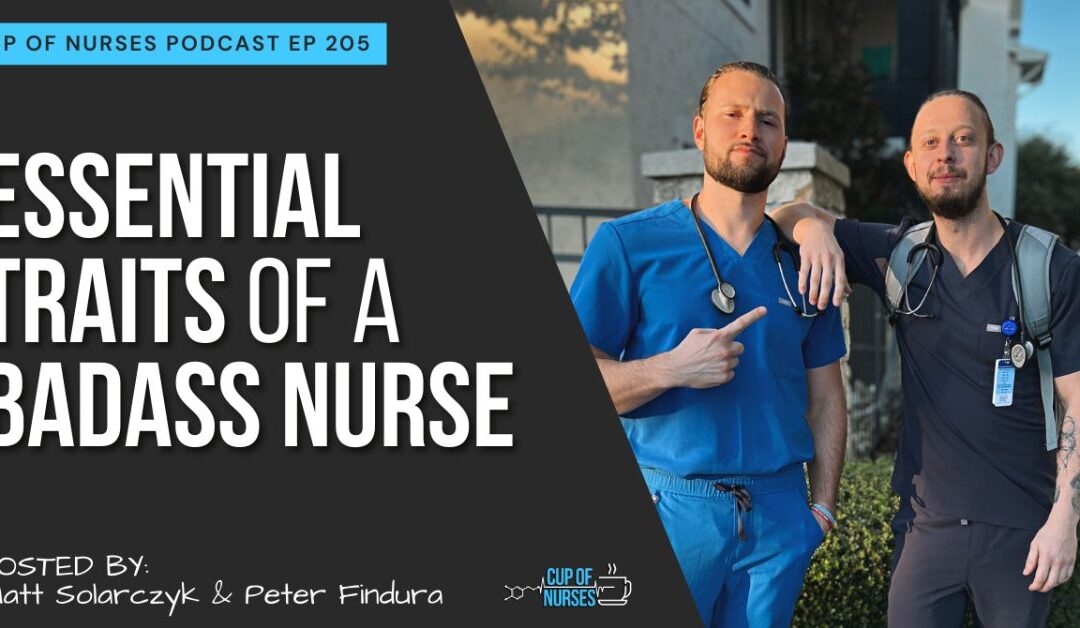
EP 237: Setting Smart Goals: A Nurse’s Guide to New Year Success
Navigating Career Goals in Nursing: From New Grad to Advanced Practice
The journey of a nurse is as diverse and dynamic as the field of healthcare itself. From the moment a new graduate nurse steps onto the unit, to the seasoned professional aiming for advanced roles, each step brings its own set of challenges and rewards. In our latest podcast episode, we delve into the world of nursing careers, offering insights and encouragement for nurses at every stage of their journey.
The First Steps: Embracing Your Role as a New Grad Nurse
Starting out in nursing can be overwhelming. New graduates often find themselves trying to absorb a vast amount of information, adapt to the pace of healthcare settings, and find their footing among seasoned professionals. It’s important for new nurses to recognize that getting comfortable on the unit is a significant achievement in itself. Seeking mentorship, embracing the learning curve, and gradually building confidence are key steps in this initial phase.
Aspiring Towards Leadership
For those looking to move beyond bedside nursing, roles such as charge nurse, nurse educator, and nurse manager present exciting opportunities. Achieving these positions requires not just clinical expertise, but also strong leadership, communication, and organizational skills. We discuss the pathways to these roles and how nurses can prepare themselves for leadership positions, emphasizing the importance of continuous learning and professional development.
The Pursuit of Advanced Education
The field of nursing offers vast opportunities for those willing to advance their education. Whether it’s becoming a Nurse Practitioner (NP) or a Certified Registered Nurse Anesthetist (CRNA), advanced degrees open new doors for career growth and specialization. Our episode explores the challenges and rewards of pursuing higher education while balancing work and personal life, providing listeners with practical advice on navigating this ambitious path.
Maintaining Mental and Physical Health
Nurses are no strangers to the pressures and demands of healthcare. The emotional toll of dealing with life-and-death situations, combined with the physical demands of long shifts, can impact even the most resilient professionals. We delve into the importance of mental and physical health, offering strategies for managing stress, building resilience, and maintaining well-being amidst the challenges of nursing.
Resilience: The Heart of Nursing
Perhaps the most vital trait for nurses is resilience. The ability to face adversity, adapt to change, and emerge stronger is crucial in a profession that deals with human suffering and constant challenges. Our episode shares inspiring stories of nurses who have demonstrated incredible resilience, providing listeners with insights into how they can cultivate this quality in their own lives.
The nursing profession is a journey of continuous growth, learning, and adaptation. By setting thoughtful goals, pursuing further education, and prioritizing our health and resilience, nurses can navigate their careers with confidence and purpose. As we support one another in reaching our fullest potential, we not only advance our own careers but also contribute to the betterment of healthcare as a whole.
Full Episode: https://youtu.be/7EqxUF3Zpdk
- Instagram: https://www.instagram.com/cupofnurses/
- Website: https://fanlink.to/CONsite
- Shop: https://fanlink.to/CONshop
- Free Travel Nursing Guide: https://fanlink.to/Travelnursingchecklist
- Nclex Guide: https://fanlink.to/NCLEXguide
- Interested in Travel Nursing? https://fanlink.to/TravelNurseNow
- YT: https://www.youtube.com/@CUPOFNURSES





Recent Comments